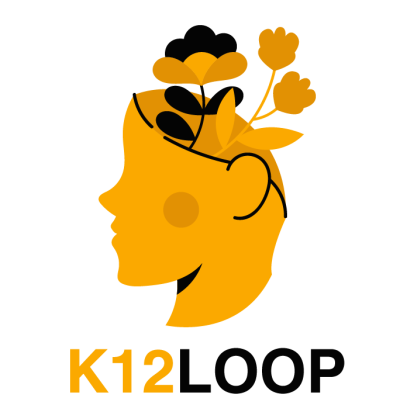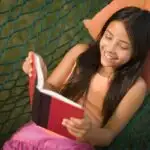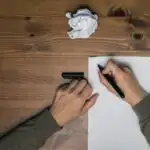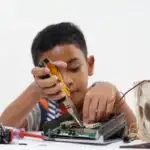Cinco de Mayo is the most important time of the year in Mexico and a grand occasion full of joy, festivity, and a whole range of exciting and traditional games and activities. The color

It’s also very well known around the world, so it can be a great idea to bring this fantastic and vibrant part of Mexican culture into the classroom so that your students can get a feel for what Cinco de Mayo is all about, and partake in some of the authentic traditions and customs that are related to it.
Here are 26 Cinco de Mayo-themed activities you can introduce to the class as a festive way to break up a lesson when May 5th rolls around.
1. Learn A Traditional Mexican Dance
Mariachi dancing is all about moving your body to the rhythm and flow of the music, and it is actually much easier to get the hang of than many people may think, so throw a tutorial on the projector, and have some fun learning this traditional Mexican dance routine.
2. Take A Spanish Lesson
No matter which grade you’re teaching, whether it’s younger students who are still expanding their English vocabulary or more mature learners who may already have a very basic grasp of Spanish, it’s never a bad idea to teach a few Spanish phrases so everyone can try putting them together into a sentence.
Simply load up a list of Spanish vocab or even create a few quick and easy quizzes to expand your and your student’s knowledge of the most popular language in the world.
3. Make A Few Papel Picado Banners
A papel picado is a beautiful multicolored paper banner that has a very long and integral history in Mexican culture as a popular folk art.
You can easily make a few to hang around the classroom during the first week of May, and don’t feel afraid to encourage the students to get as creative as possible with their color choices.
4. Fill In A Coloring Book
Bright and exotic colors are such an important feature of Cinco De Mayo festivals.
Not only do they add a lot of vibrancy and personality to the celebrations, but they also have very important symbolic meanings within Mexico and the Battle of Puebla which inspires the Cinco de Mayo national celebration.
There are plenty of unique and quirky Mexican-themed coloring books that you can buy as a teacher which you can give to each student to color in individually, or you can even ask one or two students at a specific time of the day to color as part of a lesson.
5. Make Your Own Maracas
Getting kids moving and interacting with materials is a fantastic way to keep them engaged, and you can be sure as soon as they create their own classroom maracas out of spoons, nuts, and plastic eggs, they will never put them down.
Here is a full guide on how to make these traditional Mexican instruments which can commonly be seen being shaken in the night sky during Cinco de Mayo.
6. Mexican Lottery Card Game
This educational spin on the classic bingo game uses commonly seen foods and items in Cinco de Mayo on the cards instead of numbers.
Pictures of maracas, salsa, and stuffed tacos should all make an appearance on these cards, and each time you read one out, give a little bit of background info so that everyone learns more as the game goes on.
7. Create A Flower Headpiece
The flower headpiece is a decoration that you can see many people wearing during the month of May in Mexico, with it being a vivid symbol of naturalism in the country and having a very important place within Mexican culture.
By using trimmed-down flowers which are about 2 inches down from the head and small pieces of tape, you can easily create a headband to suit your head size without needing any preparation or prior experience.
8. Make Some Tasty Tacos
Out of all the delicious dishes that have come from Mexico, there’s no doubt that the taco is the most popular, so there’s no better Mexican cuisine to enjoy in celebration of Cinco de Mayo than some soft and stuffed tacos.
Create a taco bar with some tortillas, cheese, lean meat chunks, and a little salsa for your students to have a little fun with and enjoy for themselves when break time rolls around.
9. Create A Cinco De Mayo Presentation
From the Aztecs to the Battle of Puebla, all the way to artist Diego Rivera, there are so many different events and individuals that are related to the Cinco de Mayo national celebration, so while enjoying the festivities, it’s never a bad idea to throw on a presentation so that everyone in the class a little more about the actual background of this celebrated time of the year.
10. Make The Flag of Mexico
The green, white, and red of the Mexican flag are instantly recognizable and a great decoration to stick up on the walls around the classroom once everyone is finished making their own.
Make sure to keep an eye out for who creates the best eagle at the center since this tends to be the trickiest part.
11. Craft Mexican Paper Flowers
With just a few pieces of colored tissue paper and a piece of string, you can easily craft a delicate and soft paper flower which is a very popular ornament that many children make in Mexico during the spring, and especially during the festivities of Cinco de Mayo.
12. Plan A Pinata-Making Day
Organize the students into pairs and let them dip pre-ripped newspaper strips into a combination of flour and water to create a mâché paste.
When each balloon is covered by the paste, leave it for an hour and then repeat with another layer to finish it off.
The next school day, each pair will have their own miniature paper mâché pinata that they can either leave in the classroom or take home to show their parents.
13. What A Movie Based In Mexico
Not only are there plenty of kid’s movies that are set in Mexico, but many actually take place during the festivities of Cinco de Mayo such as the recent Pixar movie Coco, making for an easy but fun and educational idea for a lesson.
14. Make A Mariachi Band
Bring a tub of toilet paper rolls, glue, and colorful construction paper to the class, and let the kids have some fun creating their own miniature mariachi band.
Don’t forget to also provide them with a few quirky decorations such as googly eyes and cut-out mustaches.
15. Play A Cinco De Mayo Trivia Game
By simply typing in “Cinco de Mayo trivia” on Google, you’ll get a bunch of different educational sites that offer some fun and light quizzes that you can adjust in terms of difficulty.
This probably won’t be enough to take up the entire lesson, but it’s undoubtedly a great addition to a wider lesson plan and can teach a great deal about the celebration and its deeper meanings.
16. Learn About Mexican Weddings
There are so many customs and traditions that make Mexican weddings unique, from the role of the madrinas and padrinos, to the Mexican wedding menus which are often full of tacos, tamales, and pork carnitas, it’s always a ton of fun teaching students about these integral parts of Mexican culture and history.
17. Research An Ancient City
As one of the oldest civilizations in the world, Mexico has an incredibly rich history full of mystical wonders and architecture, and that includes its ancient cities.
From Tulum and Chichen Itza, all the way to Monte Alban, there are more than a few cities you and the class can research together during the lesson.
18. Listen To Traditional Mexican Music
It’s not a Cinco de Mayo celebration without music blasting as loud as possible, specifically traditional Mexican music played with trumpets, guitars, and maracas.
If you are supposed to have a music lesson and want to put a bit of a festive spin on it, this is the perfect way to do it, simply load up a performance of traditional Mexican music being played and encourage the students to pay close attention to the rhythm of the songs and the instruments being used.
19. Decorate The Room With Green And Red Paper Chains
Green and red paper chains are a decoration that you will see hanging from nearly every wall in a house during Cinco de Mayo season, and the best part is you can create this decoration in the classroom by simply using some glue, scissors, and green construction paper.
Hang them from the ceiling, rest them over the whiteboard and desks, and cover a few chairs with them to make the whole room seem that much more festive.
20. Have A History Lesson About Mexico City
Mixing traditional architecture and outfits with modern technology, Mexico City is an area full of character and personality, and because of how much there is to learn about, from its rise to becoming the capital of Mexico, to its extravagant amount of restaurants, you can’t go wrong teaching a lesson all about this high-octane megalopolis.
21. Create A Sombrero
In Mexican culture, the sombrero is just as important as the poncho, being first made by the Aztecs and going on to become a common form of clothing that represents the national identity and history of the country.
The good news is that making a miniature sombrero is easy when you have a paper plate, a cup, and some glue.
Simply combine these all together, add a dash of color to the sides either with paint or coloring markers, and your sombrero will be all done and ready to show the rest of the class.
22. Encourage Students To Make A Cinco De Mayo Journal
At the end of the school day, when the festivities are over, and it’s nearly time for everyone to go home, it can be a good idea to encourage the students to write their own personal Cinco de Mayo journals where they can write down everything they have learned about the celebration, what it means to Mexico as a country, and other aspects they may want to learn more about in the future.
When the parents see how much the students have learned and what they have been up to, you can be sure they’ll have a massive smile on their faces looking at just how much fun they had in their lesson.
23. Make Your Own Pinwheels
During the first week of May, if you ever walk across a road or a field in Mexico, you can be sure that there will be more than a few pinwheels in sight, and a big reason why they are such a popular ornament is because of how simple they are to make.
Construction paper, scissors, and brads are all you need to make these small and delightful decorations, and once they’re made, the students can either place them near the windows or out in the school garden for them to blow elegantly in the wind.
24. Color The Room With Pom Garlands
Alongside pinwheels, pom garlands are another colorful decoration that is commonly seen during Cinco de Mayo, especially hanging from open doorways or over windows, and they can be made in little to no time with some pom poms, colorful string, and tassels to brighten up a room and give it that sense of excitement and vibrancy that Cinco de Mayo is so well known for.
25. Craft A Few Skull Flower Pots
The skull is one of the most important symbols of Cinco de Mayo, and Mexican national celebrations in general, representing both life and the afterlife.
At any Cinco de Mayo festival, you are guaranteed to see at least a few people wearing skull makeup or selling skull-themed ornaments and decorations, however, another easy way people include it is by painting it onto flower pots.
Bring a few pots into the class and display a few sugary skull designs on the projector for everyone to try and replicate, although if they do want to add their own unique features, then they should always feel free to do so.
26. Learn About The Importance Of Religion
Mexico is a deeply religious country, having embraced the Catholic faith for centuries at this point, and since it is such a core component of Cinco de Mayo and why the festivities are taking place, it’s never a bad idea to teach the class more about how strongly connected Mexico is to its religious beliefs.
Summary
When May is just around the corner, and the festivities are soon to kick off in Mexico, try introducing a few of these activities into your lessons, or even make an entire day out of learning about Mexico and its rich culture as a country to allow your students to get a sense of what this celebration means, and what it entails.
- Homeschooling In High School: Pros And Cons - February 24, 2024
- How Do I Withdraw My Child From School To Homeschool? - February 23, 2024
- How To Not Go Crazy Homeschooling Kids: A Guide For Frazzled Parents - February 22, 2024









Leave a comment